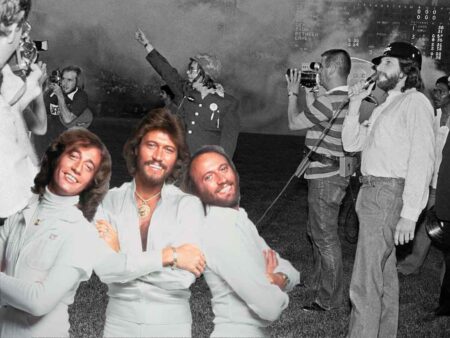Before the Grammys, the international tours, or the duets with Tony Bennett, Diana Krall spent years in bars—literally. From the time she was a teenager, Krall honed her jazz chops the old-fashioned way: by sitting at a piano in corner lounges and hotel lobbies, playing standards for guests who weren’t always listening.
“For 20 years I worked as a bar pianist,” she recalled in a 2015 interview. “You don’t just start out getting a record deal being a jazz pianist—you have to wash and dry some dishes first.”
These formative years weren’t just about paying dues. They shaped her unique blend of quiet sophistication, understated emotion, and musical precision. Long before she became one of the most respected jazz pianists and vocalists of her generation, Krall learned her craft where it mattered most—on the bandstand, one chord change at a time.
Contents
From Nanaimo to Niederdorf
Born in Nanaimo, British Columbia, Krall was already playing jazz gigs in restaurants at age 15. As her talent developed, she studied in Los Angeles and Boston, supporting herself by performing in hotel lounges and piano bars. She even took her show on the road—across Europe, to Sweden, and eventually to Zurich, Switzerland.
For three months in her early twenties, Krall lived in Zurich’s Niederdorf district, working six nights a week in hotel bars. Each evening, she walked past the same street corner, exchanged greetings with the same woman—”the lady of the night”—and then sat down at the piano for six-hour shifts. It wasn’t glamourous, but it was a masterclass in observation and discipline.
“I was playing piano all night—and watching people,” she said. “It was a great time. I was very much alone and had to figure out what to do.” In between shifts, she explored Europe by train, often getting lost, sometimes on purpose. She went to the opera, wandered through museums, and soaked up everything from Mahler to Mingus.
Krall may not have had a grand plan at 24, but she had grit, taste, and a growing sense of herself as an artist.
A Career Built on Craft, Not Image
Krall’s voice—cool, smoky, and emotionally direct—is now instantly recognizable. But unlike many artists who leap into the spotlight with big personalities or flashy arrangements, she spent years learning how not to overperform.
“I’m not a dramatic person,” she explained. “That’s why I sit at the piano and don’t stand out front of a big band.” Her heroes weren’t showstoppers; they were stylists—Shirley Horn, Carmen McRae, June Christy. From them, Krall absorbed the value of restraint.
She describes her vocal style as conversational, even cinematic: “very Clint Eastwood,” she once joked. No embellishments, no vocal gymnastics—just the truth, delivered with elegance. This approach has drawn comparisons to old-school crooners, but it also connects deeply with audiences. As Krall put it, “I look at people’s eyes and sing like I would talk to them.”
Learning on the Margins
Those early years weren’t just about music—they were about watching human behavior up close. As a young woman working long hours in unfamiliar cities, Krall became a quiet observer. “I learned a lot about people,” she said. “How they treat you. What they respond to. I learned work ethic. I learned what it’s like to work your ass off.”
She was often alone, but never aimless. While her peers might have been chasing hits, Krall was building an aesthetic. A sensibility. A way of playing and singing that felt lived in and honest.
She wasn’t chasing fame—she was refining her voice, one performance at a time.
From Piano Bars to Prestige
Krall eventually caught the attention of major jazz producers, including Tommy LiPuma, who helped her shape a series of elegant, platinum-selling records. But the woman onstage at Carnegie Hall was still the same person who once dodged margarita blender noise during ballads.
Despite her success, Krall remains skeptical of overproduction. She prefers live takes, minimal edits, and a little imperfection if the feel is right. “All I have to do is sit my ass on that piano and play,” she said. “I don’t have to say a word about authenticity.”
Even her best-known work as a songwriter, 2004’s The Girl in the Other Room, was a personal detour—not a destination. Krall has always felt more at home interpreting others’ music, filtering meaning through phrasing and nuance. She doesn’t need to overshare. She lets the piano do most of the talking.
A Jazz Life, Quietly Lived
In an industry obsessed with image, Krall’s story stands out for its humility and slow-burning ambition. She didn’t explode onto the scene—she evolved into it, note by note. From the Niederdorf district to New York’s Blue Note stage, hers has been a career built on substance, not spectacle.
And maybe that’s the point. Diana Krall didn’t become one of the defining jazz artists of her time despite starting in bars—she did it because she started there.




